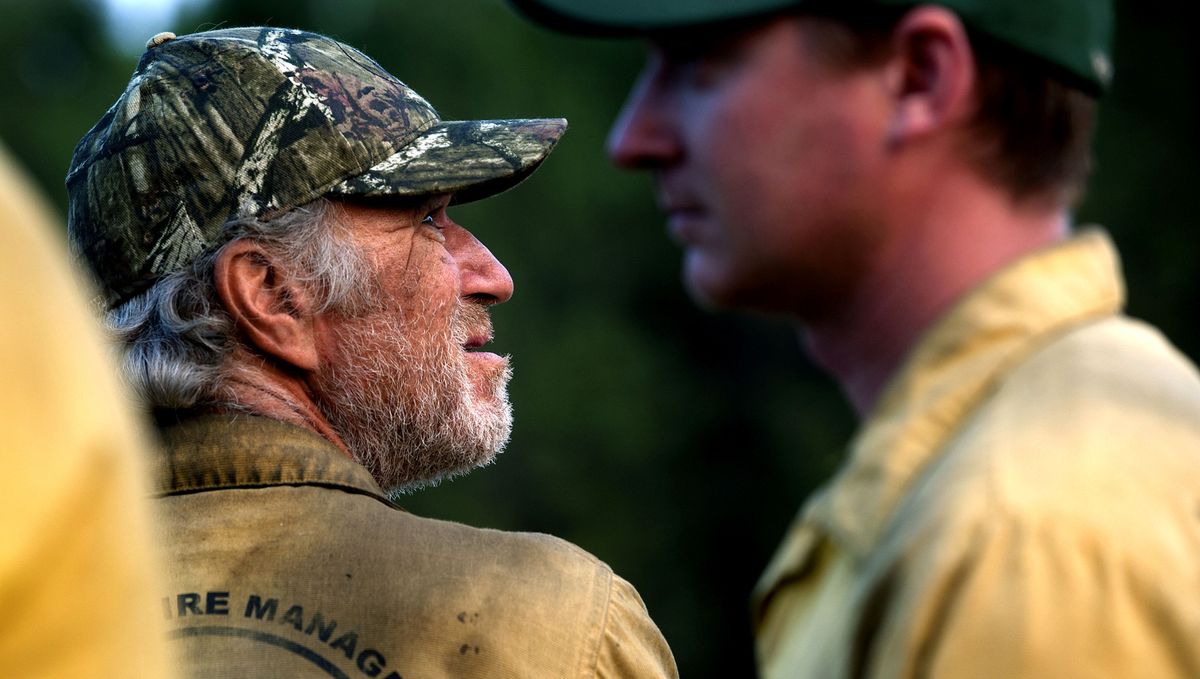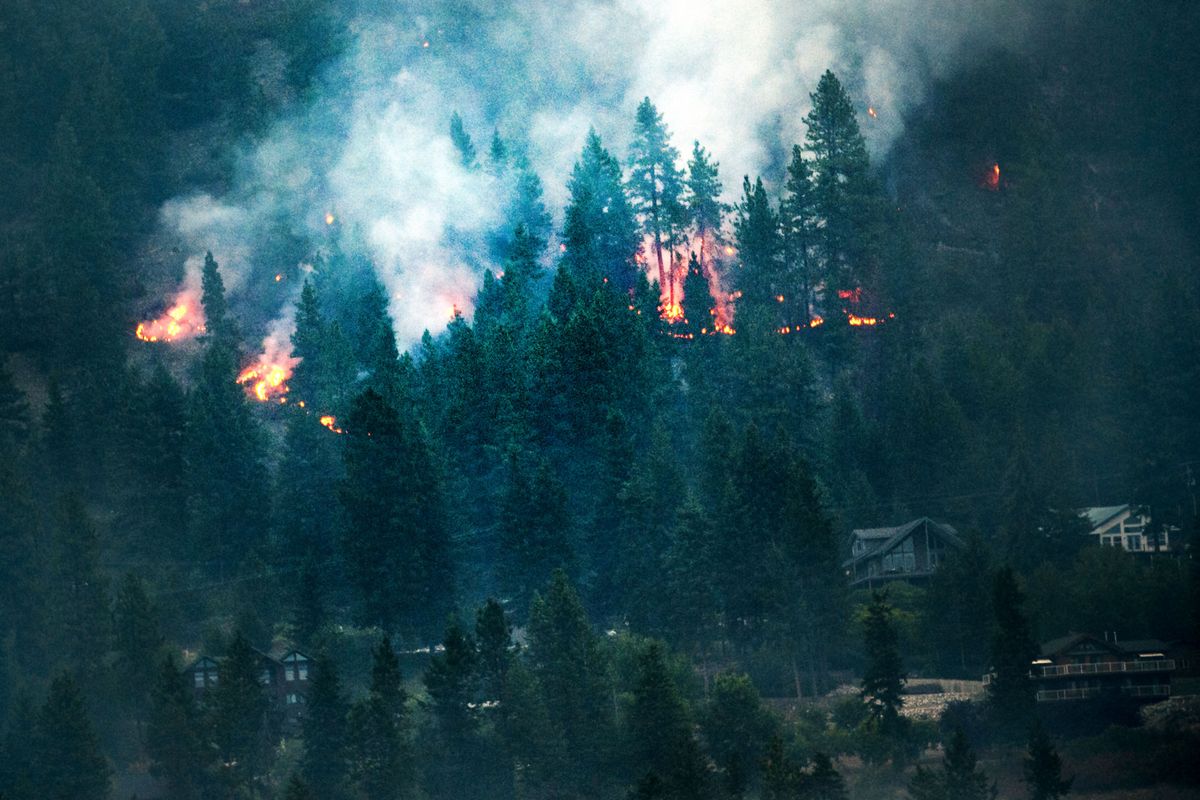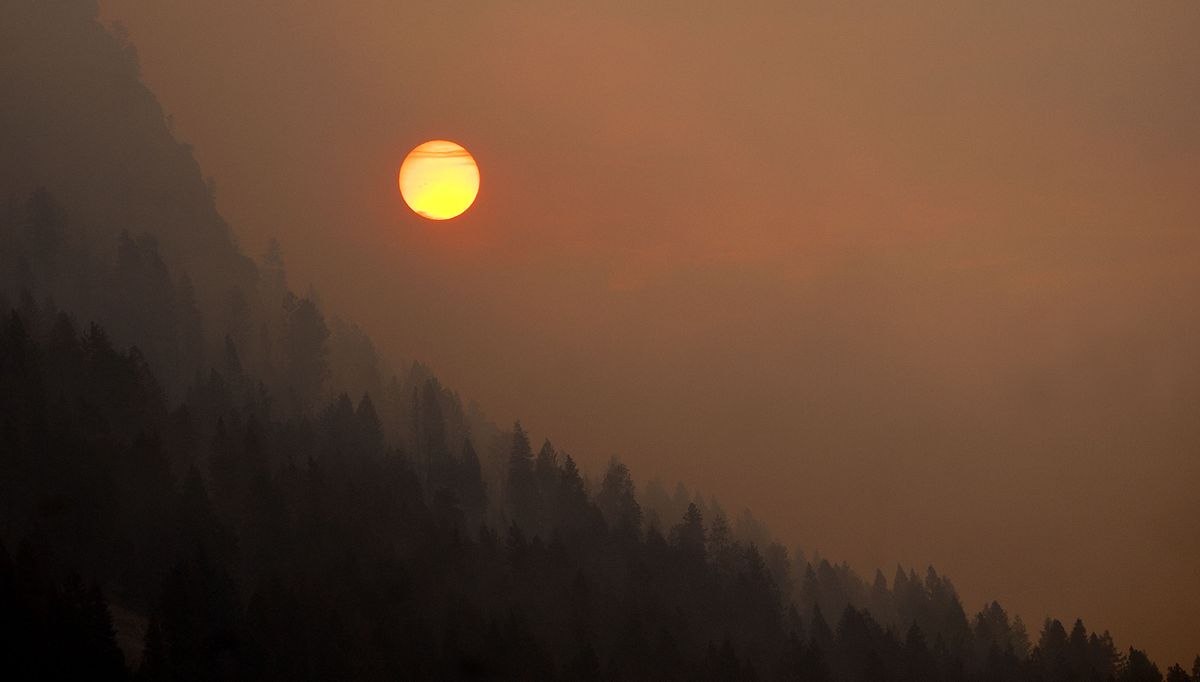Bayview residents returning to see what’s left
The sun burns through smoke over Bayview on Tuesday as crews work through the night to try to contain the fire that started Sunday. (Kathy Plonka)Buy a print of this photo
Bayview-area residents who fled ahead of a wildfire Sunday are being escorted back to their homes today for brief visits to see the damage and grab essential items like medication.
The Kootenai County Sheriff’s Office and the Timberlake Fire Protection District in Athol planned to escort evacuees to their properties in the Cape Horn area east of Bayview starting at 8 this morning. Six homes and two other structures were destroyed by the fire, which blew up Sunday and swept through timber and brush in steep terrain.
“Time is very limited, so residents will only have a few minutes at their homes,” the Sheriff’s Office said in a news release Tuesday night.
On Tuesday night, the fire’s size was revised to 1,380 acres, down from an earlier estimate of 2,000 acres. Officials said it was 35 percent contained, including the portion bordered by Lake Pend Oreille, and the cause remained under investigation.
Nearly 300 people were battling the fire Tuesday, including nine 20-person firefighting crews and operators of eight fire engines, two air tankers, four helicopters, three bulldozers, three fire boats and two sheriff’s boats.
An interagency team took over management of the Cape Horn fire Monday after Idaho Gov. Butch Otter declared Kootenai and Bonner counties a disaster emergency area.
Ralph Jones, the owner of a coffee shop in Bayview, said the fire was still burning about 500 yards above his shop late Tuesday afternoon. The line seems to be holding despite winds from the north to the southwest.
“We don’t feel threatened,” Jones said. “Certainly guarded.”
A meeting in the Bayview Community Center drew about 300 people Tuesday night. Residents and landowners directly or indirectly affected by the fire were invited to attend.
Firefighters on Tuesday also braced for high winds and possible thunderstorms as cooler air moved into the region.
“The meteorologist is cautioning us about a cold front with 30-mph gusts from time to time,” said Jim Hyland, Washington Incident Management public information officer. “The aircraft are working really hard to get some good control lines.”
The National Weather Service had issued a red-flag warning, meaning there is “extreme fire growth potential,” for northeastern Washington and the Idaho Panhandle.
Closer to Spokane, the Little Spokane fire near the Painted Rocks trailhead in Riverside State Park threatened 17 homes, prompting officials to advise residents to be ready to evacuate. But the homes were easily defended, said Nick Cronquist, Washington Incident Management spokesman.
The fire started Monday about 5 p.m. and had multiple start points. It grew to 100 acres by Tuesday night. Fire crews concentrated on containing the blaze before adverse weather moved in, Hyland said. About 10 heavy tankers, helicopters and lighter planes dropped water and retardant.
The fire is being monitored as a branch of the 231 fire, which covers 1,000 acres 7 miles south of Springdale, Washington. The 231 fire started Friday afternoon and destroyed one home and four outbuildings.
“Firefighters are really confident that they have a good handle on that one,” Hyland said.
Together, the Little Spokane and 231 fires were 39 percent contained as of Tuesday night.
At the Department of Natural Resources Dispatch Center in Olympia, staff members were tracking the progress of the Little Spokane fire as well as others around the state. Aircraft from Moses Lake made roundtrip flights to dump fire retardant on the blaze while a helicopter and three Fire Boss airplanes dumped water from nearby rivers.
Equipped with pontoon floats, the AT-802F Fire Boss air tankers were landing on the Spokane River where they could take in up to 700 gallons of water, make the short flight to the fire and return for another load.
“It cycles quickly,” Public Lands Commissioner Peter Goldmark said of the aircraft. “But it requires a very competent pilot.”
One of the planes is on loan from the state of Minnesota, which is experiencing a wetter-than-normal summer and doesn’t need the plane, he said. “As long as it rains back there, we’re good out here.”
The dispatch center was tracking lightning strikes and weather reports, and Goldmark was anxious to suppress the Little Spokane fire as much as possible before the evening, when forecasts called for winds out of the northwest to pick up. That could push cinders and sparks to the southeast and closer to suburban Spokane.
Updates on other wildfires in the region:
Williams fire: Mop-up operations are in full swing on this 332-acre fire 2 miles north of Colville in Stevens County. Firefighters will continue working to strengthen containment lines and locate hot spots around the perimeter.
Bakers Cap fire: The 35-acre fire 18 miles northeast of Bonners Ferry is 30 percent contained.
Granite fire: The 120-acre fire is burning in heavy timber about 6 miles northeast of Nordman, Idaho.


